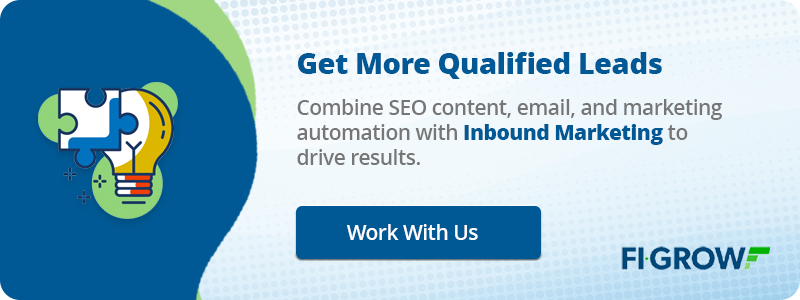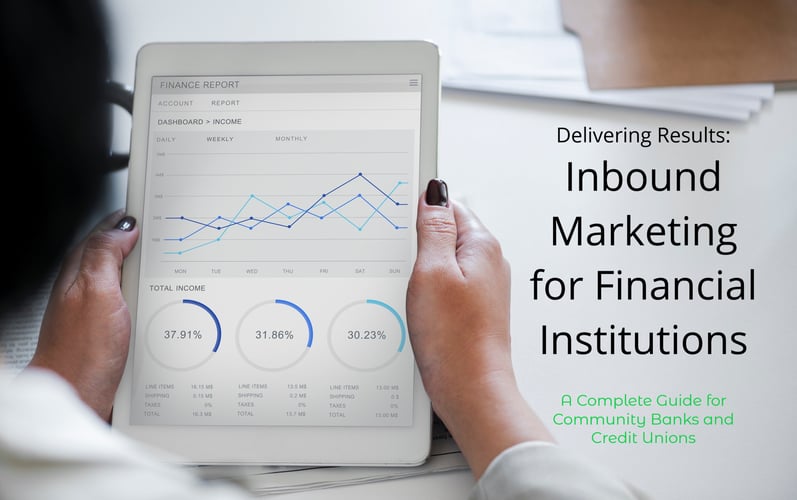Episode 80 - Proving Marketing's Worth at Your Bank or Credit Union


Don't Miss An Episode, Subscribe Now

In this insightful podcast episode, Meredith Olmstead, CEO of FI GROW Solutions, and Nida Ajaz, discuss the critical importance of demonstrating the value of marketing within credit unions. They explore common challenges faced by marketers, such as incomplete data, lack of industry knowledge, underfunded budgets, and limited strategic influence. The conversation highlights the need for marketers to bridge data gaps by integrating more comprehensive business metrics and fostering closer collaboration with other departments. This approach not only proves marketing's worth but also enhances its strategic role in driving the financial institution's goals.
Key Takeaways:
-
Common Challenges: Discusses issues like incomplete data, lack of industry knowledge, underfunded budgets, and marketers' limited strategic roles.
-
Bridging Data Gaps: Highlights the importance of integrating comprehensive business metrics to demonstrate marketing's ROI.
-
Enhancing Strategic Role: Emphasizes the need for closer collaboration between marketing and other core business functions to align strategies and secure better funding.
Transcription:
Meredith Olmstead:
Hi, there. I'm Meredith Olmstead, CEO and founder of FI GROW Solutions. We are a digital marketing and sales consulting agency. We work exclusively with banks and credit unions. And I am here with our senior vice president of marketing. I can't talk today. Nida Ajaz. Say hi, Nida.
Nida Ajaz:
Hi, everyone.
Meredith Olmstead:
Nida and I were just talking about her presentation that she did last month at the Marketing Association for Credit Unions, MAC's event in Hollywood. And she and another former client of ours who is a chief development officer at an institution, a credit union in the Phoenix area, did a presentation around proving marketing's worth, and how to show the worth and the value of your marketing efforts to the rest of your organization. And I loved the topic and what she did in her presentation. I was like, "Let's talk about this on a podcast."
So, we decided to hit record. And one of the ways, or the way that they started their presentation was they asked a poll question in the session. And they asked everybody who was there attending, and they did this twice, once in the morning and once in the afternoon, two different groups of people, "What do you think is the biggest challenge when it comes to proving marketing's worth?" And this was at credit unions, obviously, because all of these people worked at credit unions. But this could be at small banks, community banks, larger institutions as well. So, Nida, you gave, there were basically four main answers. And so, let's just say those really quickly. What were the four main challenges for proving marketing's work?
Nida Ajaz:
And these four came up basically on our repetitive pattern that we've noticed, based on interacting with various banks and credit unions. The four of them, the first one was incomplete data, and not fully being able to share impact on the bottom line, and marketing really not having that understanding. The second was lack of industry expertise. So, a lot of marketers sometimes come outside of the industry and have lacking knowledge when it comes to the product, the processes even, or the procedures that may apply to this. So, sometimes that contributes to marketing not really being valued.
And then there's also executives undervaluing essential investments. So, a lot of the things like CRM, website, tech, all of that now is coming out of marketing budgets. But marketing budgets continue to get smaller and smaller, and that's because executives don't value these ongoing investments are still part of the marketing budget.
Meredith Olmstead:
It would be almost like trying to pay for your core system out of your marketing budget. Doesn't make a lot of sense when you're talking about your website, which is your most traffic branch, 24/7, 365. Yeah, it's funny.
Nida Ajaz:
Yeah. But it is a very common thing that executives undervalue the essential investments that are coming out of marketing budgets, and that's why it leads to marketing not have its worth. And then the fourth one was not getting a seat at the table, which a lot of the first three contribute to some of this and not getting a seat at the table for marketers. So, we asked that as a poll. And surprisingly enough, in the first session, actually, it was all of the above, came as the biggest number of people who voted for it.

Meredith Olmstead:
How funny.
Nida Ajaz:
Yeah. So, it was pretty interesting.
Meredith Olmstead:
So, we were thinking what we would do is maybe dig into each of these challenges a little bit deeper on a podcast. So, from all of these, we just thought, "Okay, let's just start with the first one." So, today, we're just going to talk about incomplete data. So, basically, one of the biggest challenges that we definitely see at credit unions and community banks is that if they don't have enough data on consumer behavior, member behavior, conversions, what's working, and what's not, it limits their ability to show their worth. Because you can't really then show that all of these efforts in marketing led to this increase in membership, customer growth, new accounts, new loans, all of those things. We just wanted to talk about a few ways to try to complete the data problem. The first one, what was the first one that you were kind of talking about with people, Nida, that you see helps?
Nida Ajaz:
So, one of the main things I talked about with everyone, and I see this for marketers as a huge challenge too, where our funnel starts with reach, impressions, engagements. And then we're tracking clicks, and page views and things like that, maybe even forum submissions and the number of leads generated. But a lot of times for marketers, that's where it ends. Like, "Okay, job is done." But really, from an executive standpoint, they're looking at bottom line and how it's affecting the bottom line. So, you do need to complete that circle for the executives as a marketer and kind of figure out how those lead receives are turning into started applications, completed applications, funded loans, and really bringing that to the table. And it will help eliminate a lot of these reasons that I've talked about, like why marketing doesn't prove it's worth, by proving it through the bottom line, like the data aspect.
And there are a couple of different ways you can do that. First of all, as a marketer, we need to break some silos within internally. I know a lot of people have a different impression of marketing. "Oh, they're the creative people, or they just do this or that." But you need to, in your mind, change it to something where I'm going out and learning about the different processes of what is the lending team. What kind of data do they have? What is the retail team? What kind of data do they have? How can I use that data to make my marketing better, even from a messaging standpoint, but also from a data standpoint so you can actually prove what you're doing is working or not working?
Meredith Olmstead:
Yeah. I think really trying to be meeting with some of these department heads in the various core product and service groups at your institution is really important. Trying to get them to send you results, send you weekly or monthly lending reports, showing you if there's been a lift in applications, and if the quality of those applications is meeting the expectations of their departments and their underwriting standards. That's really, really important because a lot of times you'll be driving a lot of leads, driving new traffic, driving new applications, and then they're all getting turned down. And so, you have to figure out, if I'm driving 150 new applications, but we only have 30 new customers from those 150 completed applications, we have to figure out what's going wrong here, because you don't want to continue to spend valuable marketing dollars on applications that aren't meeting the requirements for doing business with your institution.
So, that's definitely important, to really be meeting with them. The other way we looked at this, this was like the third thing we talked about today, was just don't stay in your lane. Forget it. Look at marketing, and sales, and lending. Figure out what are the underwriting requirements. What is the process that each of your new leads, your new potential customers, and members has to go through, the hoops that they have to jump through in order to become a full customer or member or open a new account? Because when you do that, if you really fully understand that, you might be able to impact and make improvements to that experience. Or at the very least, be able to do a better job of managing the expectations of these new leads coming in.
With automated messaging, with ways that you can reach out to them without having to have a person pick up a phone, but really say, "Hey, we're going to have a lending professional get back in touch with you within the next 48 business hours." In the meantime, you may want to be considering the next three things: Putting together all of your documents, getting your materials ready for your application, filling out this information, deciding on this product or this product, those kinds of things. So, there can be ways that marketing can almost assist through the underwriting and application process once it's started.
Nida Ajaz:
And usually, it's the communication. It's the communication from a customer perspective verse an employee perspective that needs to be filled in as a gap. And that data, if you're getting data on certain processes, maybe your marketing would improve, the messaging would improve better too, because you're not over-promising something or you're not under-promising. And you can actually make it very seamless from the time they get something from a marketing perspective versus to actually interacting with an employee, and reflecting that with the data and numbers.
Meredith Olmstead:
Yeah, 100%. I think the other really important connection piece for driving improving marketing's worth is bringing data into the marketing reporting. And so, that is going to be key. We're trying to bridge that gap with clients by doing custom core integrations. They're not even full API integrations because a lot of these core systems do not make that accessible or affordable. But we're actually being able to build these out through middleware solutions. They're not super expensive. Very, very reasonably priced. One-time expenses and very small maintenance fees to be able to pull core data down, massage that data just a little bit if necessary. And then send that data into a marketing automation system or other kinds of database where you're actually able to track what marketing efforts you're making, what potentially sales efforts you might be making as well.
And then that real time or daily core data that's being brought in to show what accounts opened, what accounts were funded, what new loans were opened, how many new accounts you can attribute to different campaigns. It can be very, very important to actually connecting the data. And you can do that with core systems. We're also doing it with lending origination systems. So, we can actually see if a salesperson, a digital salesperson is following up with leads for auto loans, for example. And you know the application has been completed, but you don't know where it is in underwriting.
If you can connect the dots with the data from a MeridianLink lending origination system, that would tell that salesperson, "Oh, they're gathering their documentation or it's with the underwriter, it should be back in three days," or whatever those different steps are in the lending system. You can then use that data that's being driven into your system to have a more efficient follow-up process in place, either with the person who's actually reaching out to them one-on-one or even automating that process as well.
Nida Ajaz:
Yeah. And then this data could help. There is so much data that comes in directly from core that you can use to segment the market, too, right?
Meredith Olmstead:
Absolutely.
Nida Ajaz:
If you are looking at the age range and the education that you want to provide based on that age range, the products that they're interested in, the debit card usage. I mean, there's so much that needs to be uncovered that marketing can really dig into. But our main goal for this right now here is for you to just take the step further. And like you said, Meredith, don't stay in your lane because, yes, you might think, "Oh, no, this is an IT thing to do," like connecting core to... or you might think all these things might not be in your marketing realm. But try to step outside and do some of this so you can get the better marketing's worth.
Meredith Olmstead:
Yeah. And honestly, I've actually seen some of the most successful teams are ones that are actually combining lending and marketing in some sense. Where you actually have a senior executive who is over both of those departments, almost forcing this marriage between the two, in terms of bringing that data and those conversations together on a daily, weekly, and monthly basis. And we love that.

Meredith Olmstead:
When we see lenders who are in the mix with marketing professionals, we go through the roof about it, because we're so excited about the ability to be able to do the start phase of marketing and then the end phase of new accounts and new loans funded. So, awesome. Well, thank you so much, Nida. I think next time you and I do a podcast, we'll be talking about how people could do a little bit more with industry expertise, maybe bringing in how you onboard new employees, and possibly even how you would do a better job of positioning investments in marketing tools and digital assets for your executive team, so that you can get the budgets that you need.
Nida Ajaz:
I love that.
Meredith Olmstead:
But I honestly think lending and marketing coming together will also help with the budgets.
Nida Ajaz:
Yeah, for sure. Awesome.
Meredith Olmstead:
Yeah, for sure. So, thanks so much, Nida. I appreciate your time. If you all would like to learn more about digital marketing and sales for your bank of credit union, please visit us at figrow.com. We have lots of great case studies and other kinds of downloads that you might find useful, as well as lots of other podcasts where we talk about all of these different things. And so, please visit us there, and otherwise, let's just all get out there and make it happen.








Blog comments